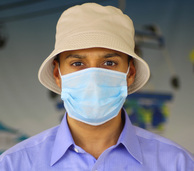|
It has taken some time, but I finally managed to complete reading Typhoon The Inside Story of an RAF Fighter Squadron at War by RAF Wing Commander Mike Sutton (ret'd), a RAF fighter pilot for 18 years. The book provides a rare insight into the high-pressure, high-stakes world of an RAF fighter squadron at war. From the beginning to the end, the book is quite captivating, and provides a detailed and an adrenaline-fuelled, gripping account that puts the reader in the cockpit of one of the RAF's most modern combat aircraft. He takes us on an amazing journey right from childhood to his initial officer training commencing on 9 August 1999, and to his career until now. He deep dives into his career highlight of ending up flying the Eurofighter Typhoon FGR4 — the workhorse of the Royal Air Force’s air combat fleet— in both air-to-air and air-to-ground missions to Iraq and Syria, where his squadron provided critical air support to ground troops. I am delighted that in this exclusive blog interview Mike shares his early beginnings in aviation, being selected to fly the Jag, what it was like to fly, and more! Nav Singh [NS]: Mike, thanks for taking time to contribute to my blog. What is your first memorable experience of aviation? Mike Sutton [MS]: Thanks a lot for having me here! Like a lot of kids, my first real interest in aviation began with the thrill and excitement of being a passenger on a commercial jet. Back in the days when you could, my brother and I were invited to the cockpit on one occasion. It was a night flight and I distinctly remember the orange glow of hundreds of lights, switches, and buttons all around the flight deck. Outside was pitch black, save for the shimmering glow of Paris far below, and rows of streetlights threading their way into the distant countryside. It was a staggering view. I bet thousands of kids have been inspired into careers in aviation because of moments like that. It’s a great shame that cockpit visits have been stopped. NS: Did you always want to be a fighter pilot? How did you get into it as it is quite competitive? MS: I didn’t know much about the RAF when I was growing up. I thought that I wanted to fly, but no one in my family was in the military and the mid 1990s were pre-internet — it was tough to discover information about the role. I applied to the RAF at 17 and was didn’t get a job offer. So, having learned an early lesson in rejection, I went to university and joined the University Air Squadron. These organisations are a great way for people to explore a potential career in the RAF without signing up. I learnt how to fly the Bulldog in formation, at low level, at the hands of some fantastic RAF instructors. I then reapplied for a job — this time with a bit of flying under my belt and a fraction more life experience — and luckily made it through the net. Selection involved several days at RAF Cranwell comprising of computer aptitude tests, mathematics, interviews, group exercises and a full medical. It’s a pretty involved process. Every year thousands apply and only a few dozen make it from the application stage into the RAF as pilots. NS: What goes in your mind during a mission to target the enemy? What do you think about? MS: Complete and absolute focus on the task, pure and simple. In a single seat jet like the Typhoon, you are completely immersed in flying the aircraft and ensuring that your radar, weapons systems, and formation are perfectly configured to conduct a strike. It’s a very involved and considered process that begins with the rules of engagement and ensuring that there will be no collateral damage. It takes pilots between five and seven years of full-time immersive training before they even make it to their first squadron. They then must pass a lengthy phase of simulator and live flying training learning how to fly and fight that frontline aircraft in all the disciplines — air combat, intercepts, air defense and strike, using all the different aircraft systems such as the radar, targeting pod, datalink, and the various weapons. This is at day and night, in large formations, and in unfamiliar airspace. Only when you have proven yourself highly competent in all of these skillsets are you considered for an operational deployment. NS: What tactics do you use to take your mind away from work after a mission? MS: When I left the RAF, I was asked what hobbies I had. ‘Hobbies! I joked; I hadn’t had any time!’ Days are invariably long on a fighter squadron, and you are out routinely out of the country on operations and exercises for six months of the year. People try to keep themselves fit and are normally juggling family life too, of course. An operational mission could last for eight hours airborne, so the whole cycle including planning, briefing, writing up reports was normally well over 12 hours. After that lot my first thoughts were normally about grabbing some food and getting some sleep! If I had some spare time I’d normally go for a run or head to the gym. As the squadron leader, I also had responsibility for the management of the pilots, engineers, and support staff — about 135 people in all. So, there was a fair amount of report writing and the normal process of meetings and management to keep a fighter squadron ticking along. Now I’m out of the military, I’ve found time to start playing sport again which I’m really enjoying. NS: In 2015, as a RAF Typhoon multi-role fighter, you were part of the Red Flag exercise - what were some of the challenges, as the Typhoon [as you have quoted] is not optimized to fly across the Atlantic? MS: All combat aircraft are a compromise. Their designs try to strike a balance between range (fuel load), survivability (defensive systems) and potency (maneuverability and weapon load). Some are optimized to one more than the other — for example a bomber such as the B-2 Spirit Stealth has great range and payload but is not maneuverable. To get agility — an essential characteristic for a fighter — you normally have to compromise on weight, and that means having a fairly limited fuel load. Hence why most fast jets can only fly for a few hours and have to be able to conduct air-to-air refuelling. For long missions, or for deployments across the globe we would routinely take on fuel from a dedicated tanker aircraft. The RAF uses modified Airbus A330 aircraft that stream fuel hoses from their wings. The fighters need to position behind these and connect a probe on the fighter into the basket at the end of the hose. This is pure hands and feet flying — it is a such a dynamic process there is no computer assistance whatsoever. As the tanker’s wings flex in turbulence the hoses can whip up and down, so connecting in poor weather can be pretty tricky — and even harder at night when the process is conducted in total darkness. NS: Do you still fly [commercial or private etc.], and knowing that you are not in active in the armed forces, how do you keep fit and motivated now? MS: I’m still involved with the military. I fly for a commercial, civilian company who are contracted to provide operational readiness training for the military. In practice this means that we act as ‘the enemy’, conducting radar and communication jamming, and pretending to act as hostile aircraft for frontline air forces and navies to train against. This involves working with a lot of NATO countries and travelling around Europe and the Middle East. There are a lot of former fighter pilots in the company so there are shades of the previous role, although without quite the same pressure as before! NS: These days it is all complex things like simulated Long Range AMRAAM, and not the old school skills of "rushing around at down low level and dropping bombs. Essentially, low level mud moving" to "multi-role" flying. What that in mind, is a non-stealthy aircraft still survivable in your opinion? MS: 100% there is a place for non-stealthy aircraft. Low observable jets have a key role in modern warfare, but they are expensive and have a particular skillset against certain target sets. Their low observability also means that they are compromised in other ways — for example payload. As an example, the F-35 Lightning II carries far fewer missiles than the F-15 Eagle. If you look at modern air forces, they aim to have a blend of 5th Generation ‘stealth’, and non-stealthy jets too. The fundamental issue actually concerns how forces should be balanced with capabilities, and this includes other assets such as drones, intelligence, cyber, etc. To use a slightly clunky medical analogy, a robust health service needs brain surgeons and GPs, as well as nurses and administrators. NS: There are reports that the Tempest fighter jet will replace the existing Typhoon combat aircraft in service with the UK Royal Air Force by 2035. What are your thoughts on this? Where do you see the future of the typhoon in the RAF? MS: The Tempest looks great. It is a sixth-generation asset and aside from the tactical capability that it will offer – enabling us to compete in the 2040s and beyond — the very development process has huge spin-offs for industry and the strength of our sovereign capabilities. The number of programme sub-contractors already runs into the hundreds and many of these companies will be involved in developing novel high-end technology that will have benefits to the civilian engineering sector. I expect the Typhoon to continue for years to come. It is one of the best multi-role fighters in the world and is in its prime. The other thing to note is that the development of sovereign fighters is the only area of defence where the Treasury makes money back. People often quote the cost per airframe but forget that with exports the UK actually generates revenue in the £Billions from overseas aircraft sales. NS: I read your Telegraph piece and one thing would be good to know for readers: why do you think air forces are not good at explaining their role, or the timescales and efforts required to set the conditions for success? Is it challenging to explain the complexities of actual warfare – aside from when someone is actually sent on a mission? MS: It’s a great question, hugely multi-facetted and not a new issue. As a historical example, the bomber command crews during World War Two have never been awarded a medal despite being killed at a rate far higher the infantry fighting at the Somme. In the modern day, one aspect is that during ‘peacetime’ it’s very easy to take risk on the military capabilities you maintain. Despite the fact that forces have been actively involved in overseas operations for the last three decades, the conflicts have largely been ‘wars of choice’ rather than wars of national survival. So, it is easy for politicians to salami slice and cut militaries, with populations at home not really noticing. You only really need a strong military when the balloon goes up, and the very survival of your state is threatened. Then it is too late to start building up – as we are witnessing with the current brutality being suffered in Ukraine. An air force pilot takes years to train, and years more to be truly useful as an instructor and tactics expert. NS: Considering the geo-political eggshell situation the world is in now [Ukraine, Israel-Palestine, Yemen, Iran etc., and with threats from Russia and China …], investment in capabilities is desperately needed! There has been talk of the Global Combat Air Programme [GCAP], headquartered in the UK, which will see the development of a 6th generation combat aircraft with Japan and Italy due to be fielded in 2035. But considering how ridiculously SLOW things get going in the UK, how optimistic are you on the GCAP programme?
MS: GCAP will invariably delay, but I do not see that as a particularly huge issue. There is value in the sovereign development process, and the end product will be superb. Until then we have a great force mix of F-35 Lightning II and Typhoon aircraft, which is as good as anything in the world. NS: An incredibly important conversation that people in the armed forces [as well as the same with submariners, astronauts and airline pilots, or other professionals that are exposed to danger] is having to deal with risk and death because the danger is on 24/7 all the time. Can you share the worst possible situation that you have ever experienced as a fighter pilot and how did you resolve or manage it? MS: Fighter pilots are invariably pretty composed people. We are good at coping in high stress environments and not reacting emotionally — I’d say that the other side of this coin is that we are pretty good at bottling issues up, which is not necessarily a good thing. Every fighter pilot will have used up some of their nine lives and have their own stories to tell — be it close calls with other aircraft, being targeted by threat systems, or suffering serious aircraft malfunctions. Many too, of course, have paid the ultimate sacrifice. It’s hugely positive that mental health is increasingly being acknowledged as an important issue, and that societies are moving towards providing better systems and care for veterans of conflict who need help. NS: Mike, thank you very much for spending time to share your thoughts. It has been an absolute pleasure having you on my blog! MS: You are welcome. The pleasure is mine. Thanks a lot, Nav!
0 Comments
I have just finished reading The Old Bold Pilot — a Pilot's Journey by captain Shakti Lumba and captain Priyanka Arora. “Ladies and gentleman, boy and girls…sit back, relax and enjoy the flight!” You’ve heard the announcement from the captain, but have you ever wondered what it's really like working in the front in the cockpit? These days, passengers are now prohibited from entering the cockpit during flight. Some aircraft are also equipped with CCTV cameras, so the pilots can monitor cabin activity, and some aircraft have extra gates to prevent anyone from entering the cockpit. Industry veteran captain Shakti Lumba — a pilot with over 40 years experience, who retired as IndiGo's vice president and had before that headed Alliance Air as well as being a union leader, has recently penned his memoirs to present to the lay reader a peek into Indian aviation through his personal journey. In this book, captain Lumba once again takes you beyond that locked door to see what the aviation industry is really like, and was like in India, and what real airline pilots do while you’re invited to “sit back, relax, and enjoy the flight.” Captain Lumba shares intimate details with typical humor and candor, and some interesting details, too that have not been heard of before. As captain Lumba describes it, this book is ‘many years of writing and six decades in the making’. It comes highly recommended! Captain Lumba, thank you very much for the time you have taken to do an interview with me about your work and life. I have read your book with interest, and it is remarkable that you have written this book from memory and the notes on your iPhone, as all your original flying logbooks and personal notes were destroyed by termites (sorry to read about that!). So, thanks for your time. It is the first time I have come across a book about aviation in India, and that written by an Indian. There may be others that I have not come across; so, excited that I have got my hands on this! Nav Singh [NS]: You are quite known for your passion, knowledge, and deep opinions about everything related to aviation and the safety, but what is the root cause of that? Where does this constant thirst for answers come from? Shakti Lumba [SL]: Nav, firstly, thank you very much for having me on your blog. It is an absolute pleasure, and glad you enjoyed my book! My passion for aviation started when I was two years old after my father sadly passed away and my mother – making sure that I did not become sad – told me that he had gone to live in the sky with the stars! From there on then, I vowed to fly and bring him back. For me, the thirst for aviation related knowledge started with reading fiction about aviation. Works such as Biggles, Richard Bach, and Ernest K Gann kept me involved until I actually started flying and realised that knowledge was as important part, just as important as the flying skillset. On top of that, the thirst for knowledge led me to do a lot of reading about the airline and general aviation industry, including flying techniques. RAF AP 129 was my go-to book in regards to building up my aviation knowledge along with books on airline management. Books such as Safe Airline by John Michael Ramsden and Staying Current: A Proficiency Guide for Serious Pilots by Dan Manningham kept me on track. Later during my career, when I got involved with the pilot’s union and represented a pilot in a court of inquiry, which looked into the crash of a Boeing 737 aircraft in Ahmedabad in 1988, it really hit me regarding the the ICAO annexures! As time went, I learnt to fly with the mind and then use my hands and feet to remain safe and professional: the reverse usually leads to disaster!  Boeing 737-200, registered VT-EAH belonging to Indian Airlines, seen here taxiing on 13 November 1978. Sadly, ten years later this aircraft crashed on approach to Ahmedabad due to pilot error in bad weather killing 133 passengers and crew. Captain Lumba was involved in the follow-up investigation. Photo Copyright Indian Airlines/Air India NS: You refer to IndiGo as a fledgling carrier…why fledging? SL: During the five years I was with IndiGo Airlines, from a startup in 2005 until I left in February 2010, it was a fledging airline with ambitions to be India’ largest with just over 40 aircraft. Although, in total it had over 300 aircraft on order! Today, I am proud to say that it is India’s most profitable airline, and the largest operator of Airbus A320 family of aircraft.  Captain Lumba was the global vice president at InterGlobe Aviation Limited (known as IndiGo Airlines). The company is India's most successful airline, operating 354 aircraft (45 ATR 72-600 and 309 A320/A321 family of aircraft), with 945 Airbus A320/A321 family of aircraft on order!). Seen here is a A320neo (registered F-WWDG, delivered to registration to VT-ITI). NS: You mention in your book about a Boeing 737 flight in 1983 with two captains disagreed and that resulted in an accident (landing gear not retracted) and you say that this could not happen these days, but it does seem to be quite common. SL: They agreed but simply the pilot in command (PIC) forgot to lower the undercarriage, while the pilot not flying realized and kept quiet until the last minute. At about two hundred feet (minimums), he pointed out there was no gear, and the pilot flying flipped the gear lever to extend the gear. The gear came down but as it had not locked down properly, it folded with the airplane settling on its engines. Such an accident is not expected to happen these days because the landing gear unsafe warning gets an input from App/Land flaps and radio altimeter. However, to the aviation world’s shock, it did sadly happen a few years ago– an incident with PIA on flight 8303 in 2020 did exactly that and killed ninety-seven passengers, and studies have shown that it may happen again. That can only happen if there is a total breakdown in CRM, and if the checklist is not diligently followed by the crew or if there is some kind of mechanical partial gear failure. Also, note that a landing without a gear can be done safely provided the aircraft has low fuel and the plane is glided down gently – so it is not so dangerous, but the aircraft will [in most cases] be written off! There was a case of an Indian Airlines Airbus A300 that ran out of fuel after diverting from Hyderabad with flaps and slats stuck after a missed approach. The captain made a what we call a “gear up dead stick landing” in a paddy field. In that incident there were thankfully no injuries. So that shows the fantastic airmanship of flying a A300 wide body like a glider by stick and rudder only. It has also been achieved with a Boeing 767 LOT Polish Airlines flight 16 in November 2011 in Warsaw. NS: Now, regarding the Japan Airlines Flight 516 [JAL516] crash in January 2024 – many aviation experts have commented that such an incident could have resulted in fatalities if it had been in another country, such as India for example. This may be due to passengers taking time to get out or taking their belongings etc. – what are your thoughts on that? What would have been the case if it happened in India? SL: Unmitigated disaster: the pre-departure safety briefing provided on Air India for example is totally inadequate for flight safety in my opinion. Meanwhile, the Japan Airlines safety video actually shows passengers how to evacuate and enforces the point not to take hand baggage on case of an emergency. NS: In your opinion, is Indian aviation safe, if not safer in 2024? SL: The Indian aviation industry is statically safe simply because of how that safety is measured. In actual fact, the largest number of aircraft type operated in India is the Airbus A320 family. This aircraft is very pilot friendly, forgiving and can literally fly itself if it has to! In my opinion, there is a clear and present risk of pilots losing their ability of basic flying skills because the operators mandate is to use the autopilot after take-off till moments before landing. In some airline companies, they have a simple rule about engaging the autopilot on the A320: not before 100 feet and only after 300 feet (~5 seconds) after rotation from the runway. This begs the question, “how do you keep up your skillsets of manual and visual flying if the machine is doing everything?” The answer? You don’t. This to my mind is a huge safety risk if the automatic functions and systems fail. Another safety risk relates to the Flight and Duty Time Limitation [FDTL] prescriptive limits as per ICAO which operators schedule pilot to. This includes the maximum flight duty, unlimited daily duty and minimum legal rest time. The recent amendments to FDTL have given some respite but the carriers are up in arms! Therefore, in my opinion, Indian aviation is destined for growth but there is the risk of reduced regulatory oversight and the system working at it limits. Somethings got to give. The issue is increase in wakefulness and lack of sleep. Fatigue has also been identified in several other major aircraft accidents as either a cause or a contributing factor (National Transportation Safety Board [NTSB], 2000, 2001, 2010; Libyan Civil Aviation Authority, 2013). In addition, aviation policies reflect the importance of fatigue in aviation safety. Since 1972, more than two hundred safety recommendations issued by the NTSB focused on fatigue (Marcus and Rosekind, 2017). Moreover, pilot fatigue has been on the NTSB’s most wanted list of safety-related priorities since 1990 (Caldwell, 2012). These policies do not seem to have resulted in a significant improvement; however, as 23% of major aviation accidents between 2001 and 2012 were attributed to fatigue, compared with 21% in a 1980 study (Lyman and Orlay, 1981; Marcus and Rosekind, 2017). A very illustrating example of fatigue and its effect on the safe piloting of an aircraft is provided by the 2010 crash of Air India Express Flight 812, which crashed upon landing in Mangalore, costing the life of 158 of the 166 people on-board. Residual sleepiness and impaired judgement were believed to have contributed to this accident, as the cockpit voice recorder indicated that the captain had been asleep for the first hour and 40 minutes of the 2 hours and 5 minutes flight (Court of Inquiry India, 2010). According to the NTSB, this was the first instance of snoring recorded on a cockpit voice recorder! Therefore, in my opinion, fatigue is a clear and present danger to safety of aircraft operations. NS: There has been quite a lot of discussion about five B777-200LR aircraft, leased by Air India from Delta Air Lines, with oxygen issues as per this link, what are your thoughts on this on-going saga and the strained relations between Air India’s senior pilots & management? SL: For flights over mountainous terrain with limited passenger oxygen in case of depressurization/ 50% power loss, escape routes must be provided in the flight plan so that the pilot-in-command (PIC) can choose a route that is safe so that passengers can have enough oxygen supply without harm. The issue is that Air India does not provide the crew with escape routes in the flight plan and expects the PIC to decide on an escape plan on the fly. Another issue is that Air India’s leadership prohibits pilots from joining a trade union or associations. It is only airline in the country where every airline pilot is dissatisfied because of bad management, corporate bullying and other such actions which do not make it a safe airline to fly with and are not cohesive to safe operations. NS: Competition from Middle Eastern and Asian carriers is stiff, but with your vast experience, what do you think needs to be done to make Air India one of the best airlines in the world again? Are they (the management) doing what they should be doing? SL: I would say that Tata’s style of management is purely production related in order to generate revenue and focus on profits first and is not focused on the customers or their staff – both their internal and external customers. NS: Now, coming to the important topic of fatigue and sleep: we have been reading a lot about pilots sadly dying because of the extensive hours they have worked because of a lack of sleep. Why is this happening a lot now than before in your opinion and what could be done to fix such things that are “ailing Indian aviation” according to analysts? SL: As I mentioned in detail above, airlines treat pilots like bots these days! Poor crew scheduling and poor HR policies and procedures are the biggest headaches for pilots. Just like in any other industry, pilots don’t leave a company, they leave bad bosses! The issue of work/life balance does not exist, and it is not even considered as a human requirement. The management consider pilot reporting fatigue as malingering. NS: Would it be fair to say that your career was more about your passion and dream of flying rather than the money? What are your thoughts about the youth of today who want to enter aviation because of the big bucks rather than the passion of flying (take some Middle Eastern and Chinese carriers for example)? I am saying this because you see plenty of young airline pilots flaunting their newly found wealth on Instagram or Twitter (wearing a Breitling watch, driving luxury cars or showing off about drinking expensive whiskey etc…). SL: Yes, that would be a fair comment to make. For me it was all about passion, as we weren’t paid well, until at least 1996 (!) My salary only got boosted after my negotiation with the pilot’s union. However, it was based on work more, earn more. I was quite busy with office-based work and with that I could only get on average approximately 60 hours at most per month. However, I was content and happy, and I prioritized my happiness, heath and needs over wants. The guys you talk about we called (Equated Monthly Installment) EMI pilots, who loved (or still love!) buying snazzy cars and fancy goods on EMI equated monthly instalments: as their wants increased, so did their debt! NS: You have at first hand seen many colorful airlines come and go (Kingfisher, Jet Airways, Alliance Air [merged with AI], ModiLuft, Vayudoot etc. because of financial woes), what, in your opinion, is the missing secret sauce for India to have a successful world-class airline that can be stable and provide an exceptional customer and safety experience? (i.e., how to make the likes of SIA, EK, QR jealous etc…) SL: Initially, I helped to merge Vayudoot into Indian Airlines: Alliance was a subsidiary of Indian Airlines that I started – it was my baby, like IndiGo. Now, Modiluft was an air taxi service using a Boeing 737-200 and a Boeing 737-200, which eventually became Spice Jet (they are always short of cash, and that is in their DNA!). Sahara, Kingfisher Airlines and Jet Airways went down into bankruptcy due to promoters skimming their airlines after they went public. The secret sauce to having a successful airline is to be well capitalized from start and make low cost as your mantra and your philosophy, and this should not be your strategy when times are tough. IndiGo keeps costs in control and seldom sells below costs and therefore it is quite profitable. Now, with Tata, Air India will bring no profits for at least 10-12 years (yes, you read that right…years!) and for that they do need to get their act together. NS: The merger of Air India and Indian Airlines, coupled with the unviable decision to purchase 111 new aircraft, contributed to the downfall of Air India, said the Minister of Civil Aviation, Jyotiraditya Scindia a few years back. Despite all else, it was clear that Indian Airlines was doing well as a profitable airline, but since the late 1980s, Air India started making losses…so any ideas why were they merged together? And any lessons we can learn today? SL: This merger was a merger of chalk and cheese and would never have worked. Only now it was somewhat stabilizing and then Tata took over. Now they are merging four airlines into two. Regarding the aircraft orders, I was one of the few who supported it. The airline needed new aircraft, or it would have drowned. The kicker in the pack was a very badly negotiated deal by novices. The government withdrew sovereign guarantees, so Air India ended up taking loans at commercial rates up to 16% interest (!). Can you imagine? It is crazy! Knuckleheads, in my opinion. 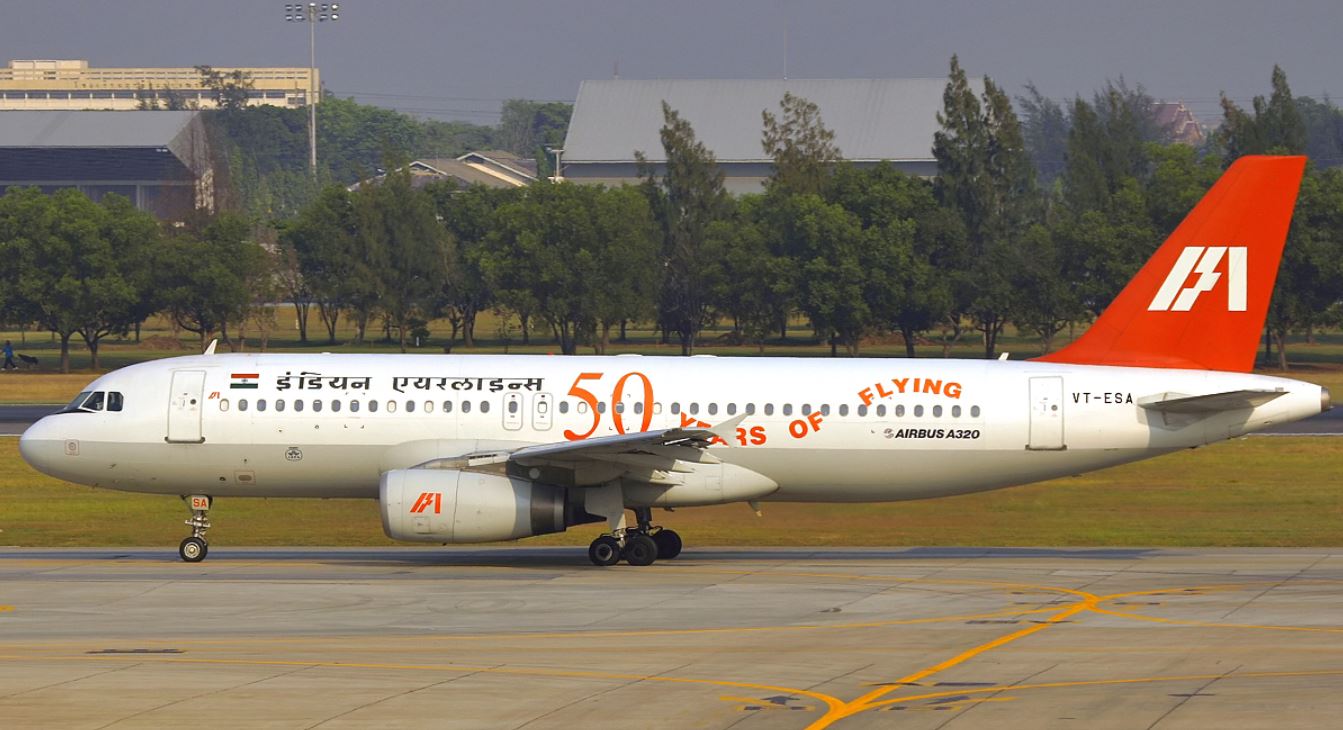 '50 Years of Flying' for Indian Airlines titles. Indian Airlines and subsequently Air India were the only airlines who had A320s with dobule wheel bogies due to India's low pavement classifiction runways in the 1990s / 2000s. Indian Airlines, Airbus A320-231 registred VT-ESA, MSN: 499]. Pictured in July 2004 in Bangkok. Photo Copyright Anthony Jackson NS: Please tell us about Laksh farms and foundation, and anything you want the readers to know. SL: Laksh Farms is named after my dearly departed mother. Her name was Lakshmi and my father used to call her ‘Laksh’ which became her pet name. The book describes how I found it and developing it into a successful farm. was a great labor of love – I often say that it is my third startup! My wife and I have created a beautiful natural heavenly place, which we are now proud to call home. It is nestled in a valley in the Aravalli range and has great energy and good vastu (home). It was developed from a total waste land that I bought in 1997 and I turned it into paradise, planted over 2,000 trees, ornamentals, mangoes, chikoo fruit (Sapodilla), citrus and ambles. One visitor described Laksh as “one doesn’t need to die to see heaven. Just visit Laksh farms”. The farm, besides being an agricultural farm with a dairy, chicken, geese, rabbits, is also a farm stay and open for bookings for a farm day. We practice natural farming, and at Laksh we also have the fabulous The Laksh Foundation in Haryana, India. This is a women self-help group and includes the Laksh Foundation Education Society. The education society provides free post school tutorials to around 1,200 kids in five neighboring villages. As a small NGO, organic farm and women’s sewing co-operative, it also began to offer free education to the children of local farm workers, offering them a way to improve their futures – and this is where we partnered with Warwick University, one of the UK's leading universities, with an acknowledged reputation for excellence in research, teaching, and innovation. Warwick worked with the Foundation since the beginning and have helped to shape our teaching programmes over time, until at least the start of the Pandemic. Warwick would send 12 volunteers during the summer holidays for three months for a teach the teacher program. In this program we were able to develop 40 of the brightest kids into educators who teach the kids and also learn to graduate in the Open University program. The foundation is a charitable foundation and is totally dependent on family and friend support. We have a computer lab for students and have tied up a weekly visit by a group of doctors who spend half a day at our village, Mangar, for medical consultation and provision of medicines for poor villagers. Laksh is our small way of giving back to society and nature from whom we took so much till retirement: Laksh is our home and was one of the best decisions I took to avoid the rat race and the hustle and bustle of city life. We are only an hour away from Delhi, Noida, Gurgaon and Faridabad yet set in tranquil settings – so near and yet so far! Bouquets and brickbats as we say. NS: Has India seen more near misses and collisions than other major aviation hubs/global average? SL: Not at all. As air traffic increases in the limited airspace, incidents of reduced separation are not only common but are not alarming and fall within the very low risk statistical average. There are risk mitigation options, both human and non-human. The whole issue comes under Communication Navigation Surveillance and the Air Traffic Management (CNS/ATM). The most common human factor is fatigue in the cockpit or in the control tower with overworked and exhausted controllers and pilots. We need to bring in more stringent fatigue management and fatigue risk management laws with penalties for aircraft operators & air traffic control (ATC) managers. This is the responsibility of the Directorate General of Civil Aviation (DGCA), which they unfortunately do not take as seriously as other safety regulators because of the commercial pressure from aircraft operators and the Airport Authority of India [AAI] who manage the CNS/ATM. A shortage of pilots and controllers adds to longer duty time, reduced rest and increased fatigue. NS: Who is to blame for such instances? Airlines, airports, or ground staff authorities? SL: In aviation, we don't play the blame game only look for the probable cause and learn from any incidents. NS: How can that gap be filled and who must fill it? SL: The only logical answer is to increase the airspace and improve surveillance by satellites. Air India and the DGCA are under no pressure to bring is proper laws to properly manage the fatigue issues for pilots and controllers. NS: Mr. Lumba, thank you very much for spending time to share your thoughts. It has been an absolute pleasure having you on my blog!
SL: You are welcome. The pleasure is mine. Thanks a lot, Nav! Oberteuringen, March 14, 2024 - IHSE, the leading manufacturer of high-end KVM solutions for the extension and switching of computer signals, announces that it has equipped a high-altitude Chinese airport with a fully redundant KVM solution for fail-safe air traffic control. Over the past few years, IHSE KVM solutions have become an important and crucial element in air traffic control systems in major airports around the world. IHSE systems enable controllers in the visual control room to interact with all tower system equipment located in ground-level equipment room. Air traffic controllers can interact with all essential systems from their personal workstations, switch between them and react instantly to all eventualities. For these security-critical applications, IHSE KVM systems offer increased protection against cyber attacks and a comprehensive redundancy concept for fail-safe 24/7 operation. IHSE KVM systems are deployed by several government aviation authorities and in many major global airports, including Frankfurt, Paris and King Abd al-Aziz Airport in Saudi Arabia. Air traffic management at an altitude of 3,500mAn IHSE system was recently installed in China at one of the highest airports in the world at an altitude of over 3,500 meters - the airport is unnamed. The extraordinary location presented the system planners with special challenges and posed complex requirements on equipment and systems that are not generally encountered in lower-level airports. The combination of low air pressure, difficult terrain and geomorphological features, high winds, low cloud and extreme diurnal temperature differences calls for a particularly robust and resilient system. These are in addition to the normal requirements for the highest levels of security and reliability that are essential in air traffic management systems.
The fully redundant KVM system deployed here comprises two Draco tera flex KVM matrix switches with automatic switchover to a hot standby unit in the unlikely event of a failure of the primary switch. For further protection, the installation includes redundant power supplies and redundant fiber optic connections. The IHSE solution creates optimum working conditions for air traffic controllers, who can switch all information sources to the screens directly from their multi-monitor workstations and immediately access all tower systems to ensure safe flight operations. From March 19-21, 2024, IHSE will present its flexible and highly secure KVM solutions for towers, apron control, simulation rooms, baggage handling and passenger information systems at Airspace World 2024 in Geneva. Since I published my second blog article on the 25th of January – where I highlighted some exclusive insights relating to a whistleblower Air India captain, who cannot be named for legal reasons, raising concerns about passenger and Boeing 777-200LR aircraft safety [claiming they're flying illegally and could be left without oxygen if the cabin were to suffer a sudden decompression] – I have the following updates: COMPLAINTS SENT TO THE DGCA BY THE WHISTLEBLOWER CAPTAINThe whistleblower captain has sent a series of complaints via emails in 2024 filed with the Directorate General of Civil Aviation (DGCA) dated the 2nd of January, 27th of January, and the 7th of February. In these complaints, he painstakingly explains to the DGCA that he was “illegally terminated from Air India”. He further “requested multiple times from the DGCA to hold a fair and just enquiry to be conducted based on the principles of natural justice, pertaining to the safety violation”, which he believes is being done willfully and deliberately even though Air India officials have been cautioned since January 2023. According to the DGCA, they conducted a comprehensive investigation into the alleged violations. "Since the investigation prima facie revealed non-compliance by the airline, a show cause notice was issued to the Accountable Manager of Air India Limited", said the DGCA. "The response to the show cause notice was duly examined with respect to the laid down stipulations under the relevant statutory provisions and the performance limits stipulated in critical documentations laid down by the Original Equipment Manufacturer (OEM)", it said. Of paramount importance to the whistleblower captain is that he wants to understand “why the DGCA hasn’t taken any corrective action against Air India to stop operating those illegal flights”, which was the primary subject of his complaint [because he believes this is a cause of extreme danger to the lives of passengers and crew on these leased Boeing 777-200LR aircraft while flying between Indian cities and San Francisco [SFO]]. The whistleblower captain states that Air India is "misusing the privileges of the Air Operator’s Certificate on a daily basis, which is a license by the granted by the DCGA to legally operate a commercial airline. Misusing privileges of license on a daily basis warrants a serious review of the situation”. HOW IT ALL STARTEDI have also read with interest some highly sensitive and confidential information relating to this matter shared by the whistleblower captain. From these documents, some things can be made public, especially in relation to how this situation got to where we are today. On the 22nd of January 2023, the whistleblower captain raised a voluntarily safety report by writing to the various heads of departments of Air India via an email regarding this critical issue. Prior to this date, he did extensive research into this important matter. While his research was on-going regarding the same issue, on the 30th of January he was scheduled to operate a similar flight from SFO to Bangalore. On that day, for the route which he was assigned to operate as the PIC (Pilot in Command), he was presented with at least three flight plans, one after the other. These were presented by the flight planners at the IFD [Integrated Flight Dispatch] via the flight dispatch office in New Delhi. However, he felt he had no choice but to reject all of the flight plans because “he was duty bound towards the safety of his passengers and crew, as these flight plans were planned in a manner which was not only illegal but also fatal for the passengers and crew in case a depressurization emergency were to take place on certain segments of the route”. Therefore, he insisted that a safe and legal routing be offered by the flight dispatch department between SFO and Bangalore. Now, because of the change in the routing demanded by the whistleblower captain [PIC in this case], the flight dispatch office had to figure out an alternate route beyond the job of automatically printing out the everyday flight plan routings. It is a standard procedure to get a flight plan before any flight; however, the issue here is that getting alternate flight plans for this reason is not a regular occurrence. Sometimes an airline will have a standard route it uses for a flight – mostly on short domestic routes – and these routes will be saved in a database on the aircraft’s Flight Management Computer [FMC]. The FMC is an advanced computer system that plays a key role in providing flight guidance and control to the aircraft and is a critical component of the Boeing 777 aircraft which contains navigation and aircraft performance data. The FMC works in conjunction with other systems, such as the Flight Management System (FMS), the autopilot and auto – throttle etc., to ensure safe and efficient flight operations. Ultimately, the FMC is responsible for calculating and displaying essential flight-related information to the pilots, including routes, speeds, altitudes, and vertical and lateral navigation. It also controls the autopilot and auto throttle systems, helping to maintain the aircraft’s stability and performance during various phases of flight. Therefore, each flight route is planned based on several factors, including options for speed, altitude, fuel consumption, alternate airport/route, weight etc. Under normal circumstances, some of these things may of course change pending any requests from Air Traffic Control [ATC], weather, commercial dept. of the airline, such as for example last minute changes in cargo or the number of passengers. Although the standard distance doesn’t usually change; however, with every flight the time taken to fly the same route can change (and therefore the fuel required) could alter, for example it would take longer if you were flying in strong head winds. Airlines require permission to fly through the airspace of each country they pass over. If for any reason you don’t have permission, the route will be altered, and they also try to find the most inexpensive route [compatible in every sense.]. LEASED BOEING 777-200LR AIRCRAFT ILL-EQUIPPED IN TERMS OF OXYGEN FOR THE FLOWN ROUTES As per the whistleblower captain’s extensive research, he noted that his “aircraft was not equipped with the legal amount of stored breathing oxygen to provide passengers in case there was an emergency descent required over Greenland due to vast stretches of high mountainous terrain throughout the continent”. Furthermore, on the day of that flight the whistleblower captain realized the same held true for other route segments which were passing over high mountainous regions such as the Rockies and some parts of China [ especially Kunming airspace] as well. "For these leased aircraft, it is not safe and legal to fly over China's high mountainous terrain, especially around the Kunming ZPKM flight information region (FIR, which is Airway A599 and then Airway A581] which contains the Kunming, Lijiang, Dali airspace" said the whistleblower captain. He noted that “it would have taken a considerable amount of time, which was much more than the capability of Air India’s leased B777-200LR aircraft, which carried only 12 minutes of stored/breathing oxygen on board, to descend to at least an altitude of 10,000 feet or below to prevent passengers from experiencing hypoxia”.  Map of China's flight information regions (FIRs). The Kunming FIR region is the one with high mountainous terrain. Air India's Boeing 777-200LR flights are being used to fly Indian destinations to SFO via the Kunming FIR, Wuhan FIR, and Shanghai FIR regions over China and then onto South Korea and the Pacific Ocean: Copyright ICAO. FLIGHT PLANS NOT COMPATIBLEDespite the aircraft not being equipped with more than 12 minutes of stored breathing oxygen, the whistleblower captain, while he was still at the crew hotel in San Francisco, noticed the initial flight plan he was presented with was illegal because it required him to fly the Boeing 777-200LR aircraft with less than the minimum legal amount of stored breathing oxygen over high mountainous terrain, especially the route segment over the Rockies. Fearing for the safety of the lives of his passengers and crew, he requested the flight planners at the IFD to provide an alternate flight plan. Almost seven hours went before the flight dispatch team provided him with a flight plan which was legally acceptable. “This highlights gross incompetence on the part of the Air India flight dispatch team, which is supposed to be of assistance to its operations 24/7 and efficiently and timely produce results, such as providing a flight plan even if it requires a change in routing,” said the whistleblower captain. That was to be the whistleblower’s final flight, and since then he claims, “Air India has illegally terminated me without conducting a proper enquiry”. I wonder if the passengers were ever refunded for this flight. I have reached out to Air India’s press office for a comment but have not received a response. PASSENGER WOES ON INDIA-SAN FRANCISCO ROUTESMind you, this is not the first time an Air India flight from San Francisco to India [and vice-versa] has been delayed. On June 6, 2023, Air India flight AI173D from Delhi [DEL] to San Francisco [SFO] carrying 216 passengers and 16 crew on board was diverted to the Magadan port city in far east Russia following a mid-air glitch in one of the Boeing 777-200LR aircraft engines. All passengers and crew were stranded in the port city for two days, and the replacement aircraft ferried them to San Francisco on 8 June. However, the return flight to Mumbai was cancelled. "Air India flight AI180, scheduled to operate from San Francisco (SFO) to Mumbai (BOM) on June 8, 2023, was cancelled due to an unforeseen technical issue," an Air India spokesperson said. It is a sad state of affairs for an airline that was once known as a world-class luxury brand, especially in the 60s, 70s, and the 80s. By the 1970s Air India had over 10,000 employees in over 50 countries. It was a brand to be reckoned with and had an aura of sheer glamour and excitement. According to the book “Empires of the Sky – The Politics, Contests and Cartels of World Airlines.” by Anthony Sampson, Air India’s founder, the legendary aviator and industrialist J.R.D. Tata was approached to design Singapore Airlines’ inflight services which international travelers speak of highly today. The best of Asian hospitality that Thai Airways and Cathay Pacific are known for today was first embodied by Air India right from the 1950s. However, things began to deteriorate from the 1990s onwards as competition became fiercer, especially from the Middle Eastern and other Asian carriers. Air India began making heavy losses after merging with the state-owned domestic operator Indian Airlines in 2007. It relied on taxpayer-funded bailouts to stay operational, and since then it has sadly been the butt of jokes for bad quality of service. DETAILS NOT CLEARThe captain claims he did not refuse to fly, but instead he asked for an alternate route because he was concerned for the safety of the lives of the passengers and crew members.
A few details are murky and not clear as mud: why did it take the flight planners almost seven hours to provide the captain with an alternate [legally acceptable] flight plan at San Francisco? [note that airlines are used to operating and working in 24/7 time zones for emergencies like this, and the resources are there for back up support.], has this ever happened before with any other airline? More importantly, what exactly has the DGCA fined Air India for? and under what provision of the law (DCGA Civil Aviation Regulations [CAR])? and why has not the order dated 24th of January 2024 against Air India been made public by DGCA? The whistleblower captain “has not had any replies, even after he has applied under the 2005 Right to Information Act”. The whistleblower captain has also asked [I quote] “Why has the DGCA not publicly disclosed the order copy dated the 24th of January 2024, which imposes a fine on Air India, especially to the whistleblower captain, as he is the complainant?” He further states that “the DGCA have released a press note, which is ambiguous and not specific. This order should have been made public to all the stakeholders to learn from it and understand it from the air safety point of view to implement these safe practices in their airlines and know what not to do”. Another veteran airline captain spoke to me on condition of anonymity and said: “It is important to note that whistleblowers play a crucial role in the fight for accountability and a fairer and safer world, and especially in aviation”. Since I published my blog yesterday – where I highlighted some unique insights relating to a whistleblower Air India captain, who cannot be named for legal reasons, and who raised concerns with the airline about passenger and aircraft safety [claiming they're flying illegally] – a couple of interesting things have happened. Firstly, we heard that Captain Vivek Chhabra, the Chief Flight Operations Inspector [CFOI] has been fired rather unceremoniously by the Directorate General of Civil Aviation (DGCA). Secondly, on top of this, the DGCA fined Air India over US$132,000 for safety violations on some of its ultra-long-haul flights to the US. This has happened, as per my understanding, after an internal investigation carried out by the DGCA. The aviation watchdog slapped the fine on Air India for flouting rules with respect to flights operated on certain long routes over vast stretches of mountainous terrain. "We disagree with the order issued by the DGCA. The issues raised were thoroughly examined by Air India along with external experts concluding that there was no compromise on safety, whatsoever. We are studying the order in detail and will review the options available to us, including our right to appeal as well as taking it up with the regulator," the airline said in a statement. According to the whistleblower captain "if the DGCA had included the complainant (the whistleblower captain) in the investigation, then no stones would have been left unturned. For reasons best known to the DGCA, they have ensured that the complainant (whistleblower captain) has not been a part of this investigation”. Furthermore, the captain claims he doesn’t think the DGCA has acted fairly, and a proper investigation has not been carried out because he believes a fine is not enough to deter the airline.
He said “considering the grave breaches of duty by Air India, I fear this will enable Air India to essentially go Scott free by paying a paltry amount of over US$132,000, even though the breaches are of a very serious nature and affect the public at large”. He does have a point. Whatever the actual circumstances that led to the sacking of the whistleblower pilot, there are still thornier questions for both the DGCA and Air India about their approach on handling this case. Analysts and experts have been asking for some time whether fines actually change human and corporate behaviour? This is true not just relevant for the aviation industry, but also in healthcare, railways, and any other customer-facing industry. Or is there something else that can be done to make us better human and corporate beings? “The DGCA should have held a full enquiry against Air India and ought to have called me as I would have brought on record the grave and serious issue and further mala fides of Air India in terminating my employment so as to hush up the matter,” the captain went on to say. On whether airlines should be penalised for safety failures, the whistleblower captain said “there is no point – the basic ethos of any airline is “safety first”. However, Air India has proven by this very example [of being fined] that they are putting “safety last”. Profits over safety has made Air India tie itself up in knots”.
The air show was delayed for two years during the pandemic
This week saw the welcome return of the Farnborough Air Show. Running from 18-22 July, visitors were treated to displays, press releases, panel roundtables, exhibitions from the aviation industry, including aerospace, defense. Issues such as Environmental, Governance and Sustainability (ESG) were high on the agenda, with aircraft manufacturers and airlines promising smarter technology, cleaner fuel, and greener business. This means more room for highly fuel efficient and quieter aircraft, and hopefully less expensive to operate.
As an example, Airbus and CFM International are collaborating to flight test CFM’s cutting-edge open fan engine architecture on board an Airbus A380. The Flight Test Demonstrator is aimed to mature and accelerate the development of advanced propulsion technologies, as part of CFM’s Revolutionary Innovation for Sustainable Engine (RISE) demonstration programme. “New propulsion technologies will play an important role in achieving aviation’s net-zero objectives, along with new aircraft designs and sustainable energy sources,” said Sabine Klauke, Airbus Chief Technical Officer. British Prime Minister Boris Johnson, astronaut Tim Peake, and British Transport Secretary Grant Shapps visited the show in the first two days. The Prime Minister met some of the 1,500 exhibitors at one of the world’s biggest aerospace and defense trade shows. In a speech, Mr Johnson said: "I’m glad that I finally made it to Farnborough, this famous air show, in the climactic weeks of my time as Prime Minister." The photos in this blog were taken over the five days, in a period in which we experienced the hottest day ever in the history of records in the UK (40.2C) on Tuesday July 19, followed by the obligatory rain showers. Hence why you seen a blue sky in some photos and a dark grey in others. Were there many orders?
With this being the first show in four years (and with a delay due to the Pandemic), it seemed and came across as a quieter affair compared to previous shows. There wasn't the much anticipated fanfare that happened in previous years. But one thing was clear: Boeing seemed to do quite well in terms of orders. Though Airbus, meanwhile, managed to conduct just two sales on the premises of the airshow, one for the A220 and one for the A321neo. However, it had secured a big win just ahead of Farnborough, with China’s top three carriers ordering almost 300 A320 family aircraft on 1 July, 2022. This chart from AeroTime shows a breakdown of the orders made in this year's show, and Boeing has certainly made more orders in 2022:
The Boeing 737 MAX 10
The largest of the 737 MAX family, the Boeing 737 MAX 10, made its international debut at the Farnborough International Airshow 2022. During the show, the aircraft ran on a blend of sustainable aviation fuel. Before the show, Boeing had already received more than 3,300 net orders for 737 MAX narrow bodies, and kicked off the Farnborough Airshow with firm order signings with Delta Air Lines, Inc. for at least 100 Boeing 737 MAX 10 jets and with All Nippon Airways parent ANA Holdings for twenty 737 MAX 8s, along with two Boeing 777-8F cargo variants.
Also, Qatar Airways made official an order for 25 Boeing 737 MAX 10 aircraft, with options for a further 25 of the type. "We are honored that Qatar Airways has decided to add Boeing’s single-aisle family to its fleet, deepening our relationship with this world-class airline," said Stan Deal, President and CEO of Boeing Commercial Airplanes. "The 737 MAX 10 is ideally suited for Qatar Airways’ regional network and will provide the carrier with the most capable, most fuel-efficient airplane in its class," he added. The order, worth $3.4 billion at list prices, capped a largely one-sided show dominated by Boeing's efforts to shore up the MAX 10, whose future lies partly in the hands of regulators and Congress. Qatar Airways displayed its Boeing 777-300ER (FIFA World Cup 2022 Livery), 787-9 Dreamliner and Qatar Executive Gulfstream at the airshow.
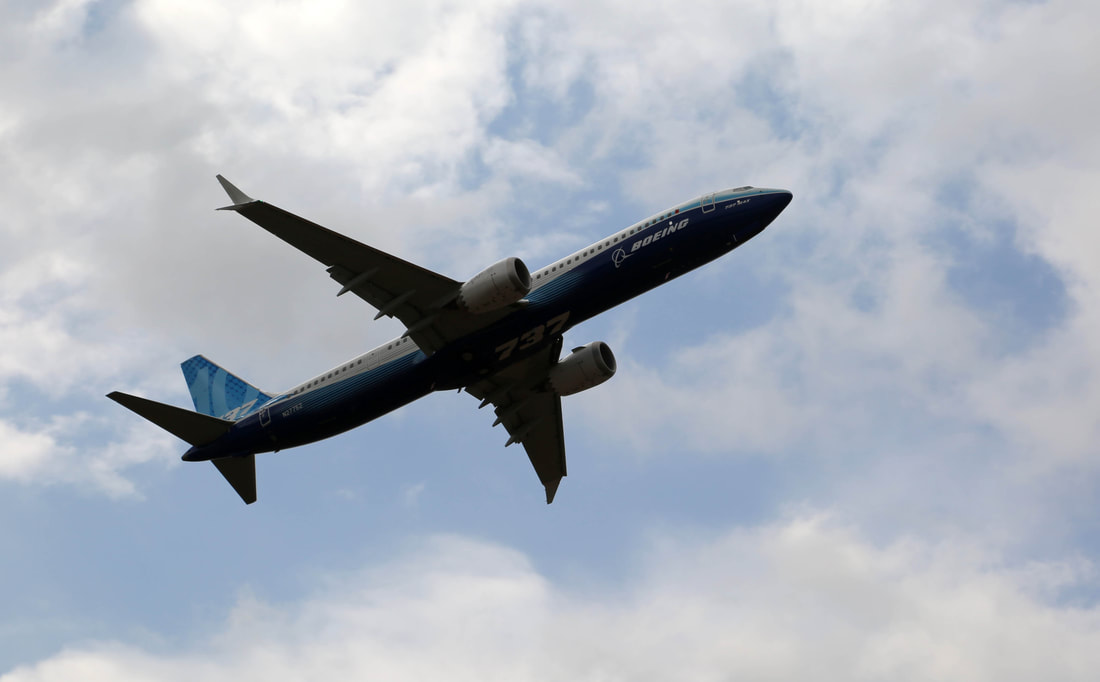
The Boeing 737 MAX 10 leaves Farnborough after the show back to Seattle via Reykjavik. The 737 MAX 10 will continue test flights and obtain its type certificate before it can begin scheduled operations. The delay, caused by the problems of the 737 MAX 8 and the extended scrutiny of the U.S. Federal Aviation Administration (FAA), is a major stumbling block in its commercialization. Photo Copyright Navjot Singh
The Boeing 777X
One of the highlights of 2022’s edition of the show was the huge Boeing 777X, the world’s largest and most efficient twin-engine jet, which the manufacturer showed off in both static and flying displays. With new breakthroughs in aerodynamics and engines, the 777X will deliver 10 percent lower fuel use and emissions and 10 percent lower operating costs than the competition. The 777X is based on the original 777, but is much larger, more powerful, and is ready to serve the next generation of long-haul air travel, and generally passengers prefer large aircraft, and this will not disappoint!
Even though the 777X has been delayed by over five years, we are in this interesting period where the airlines that were affected by the delay have almost got over that part now. The COVID-19 Pandemic, if anything, has helped that cause. With any new aircraft, airlines are usually cautious. It is going to be great for the passengers and great for the airlines, too! Warm champagne anyone?
The show also saw the introduction of some interesting features that we may see. Thanks to the team at Turningleftforless for taking this video of a "Champagne on Demand" as demonstrated by Adient collaborating with Boeing to explore improved comfort, functionality of commercial aircraft seating and interiors. My mate, James Nixon (ex- A380 captain), queried "Why does any airline exec think passengers want to drink warm champagne?".
Airbus A350-900 XWB and the Airbus A220-300
Airbus brought its A350 test aircraft for display flights throughout the show. Also, Airbus showcased an ITA Airways A350-900 and an Air Baltic A220-300 aircraft on the ground.

Air Baltic's A220. One of the biggest orders for the aircraft came from Delta Air Lines, Inc. Delta Air Lines firmed up orders for 12 A220-300 aircraft, bringing Delta’s total firm order for A220s to 107 aircraft – 45 A220-100s and 62 A220-300s. The A220s will be powered by Pratt & Whitney GTF™ engines. Photo Copyright Navjot Singh
New British Airline: Hans Airways
Start-up carrier Hans Airways moved a step closer to launching flights between the UK and India, with the lease of an A330-200 aircraft and the start of crew training. According to the CEO, Satnam S. Saini, the aircraft is weeks away from launch.
The airline plans to launch flights between Birmingham airport and Amritsar as a key destination using an ex-Air Europa A330 and with a two class configuration – economy (branded Anand Class) with 274 seats and a seat pitch of 31 inches, and premium economy (Anand Plus) with 24 seats and a seat pitch of 56 inches. Updating the media on progress Barry Humphries, CBE, Hans Airways’ board director and former head of air services policy at the UK Civil Aviation Authority, said: “With the loss of flights operated by India’s Jet Airways and British inclusive tour operators Thomas Cook and Monarch Airlines, there is room for a third UK airline flying between UK and India (complementing British Airways and Virgin Atlantic.) All of us are working exceptionally hard and on schedule to be that third UK designated carrier.” Supernal's eVTOL vehicle cabinBlack Eagles and the Boeing Stearman (Aerosuperbatics Wingwalkers)Future is Boom?
Boom Supersonic announced the updated design of Overture with 4 engines. Carrying 65–80 passengers at twice the speed of today’s airliners, Overture will fly Mach 1.7 over water with a range of 4,250 nautical miles.
Boom further said that the new design is the culmination of 26 million core hours of simulated software designs, five wind tunnel tests, and the careful evaluation of 51 full design iterations resulting in an economically and environmentally sustainable supersonic airliner. Boom also announced a market-expanding alliance with Northrop Grumman to develop special mission variants for the U.S. Government and its allies. The question here is, will it better what Concorde achieved and will passengers pay for and enjoy the experience? United Airlines have already proudly stated that they plan to offer services on Boom. But will it be a success? We shall see. Maybe a debut at future Farnborough Airshows? Aircraft on display |
Get in Touch:LIFE MATTERSHere I share my thoughts
and experiences during my travels, and how some things have affected my life as an expat and world traveller. Travelling is about capturing that moment in life. Every word, view and opinion on this page is that of Navjot Singh - except where indicated. The most recent is at the top. Scroll down to read the archive. Or search using CTRL+F (COMMAND + F) and enter a keyword to search the page. Just some of the stories you never heard before. The NAVJOT-SINGH.COM web blog is separate to this web site....Click blog, which may not be visible in some countries due to local firewall restrictions, so in those cases this weblog may be read. The weblog also includes some of my press trip reports- most of which are not published on the official blog because of copyright issues. The weblog also contains articles that may be associated directly with a PR trip for a country, airline or a hotel. These are PR reviews done in relations with various companies. If you are an investor or a trend watcher then you may find this website useful as investing has a lot to do with personal observations and finding the ideal trend or next big thing. The average human on the street frequently knows far more about the state of the economy than politicians, university professors, subject matter experts, and financial analysts who seldom travel, or if they do so, only from one hotel to another hotel! The pulse and vibrancy of an economy is nowhere more visible than on a country's streets. All photos and words are © Navjot Singh unless stated. Photos taken by others or by agencies are appropriately copyrighted under the respective name. No photo or word/s may be taken without the prior written permission by the author (i.e. Navjot Singh). All Rights Reserved. Archives
April 2024
Categories
All
|

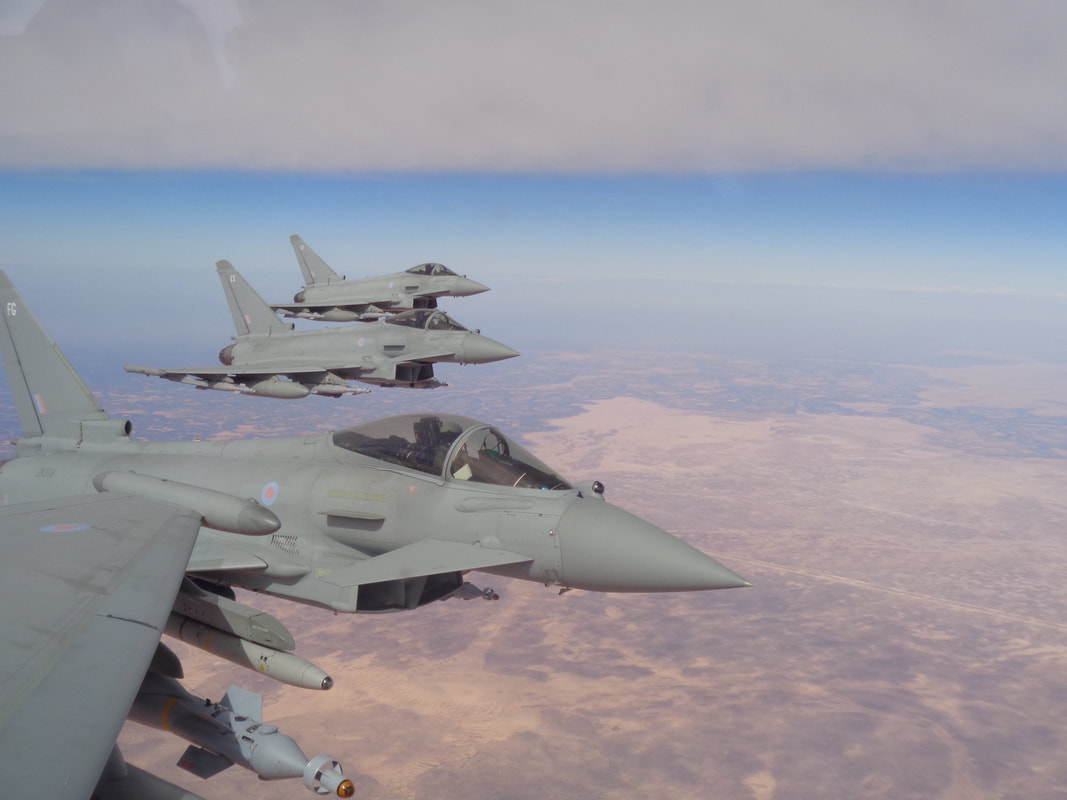

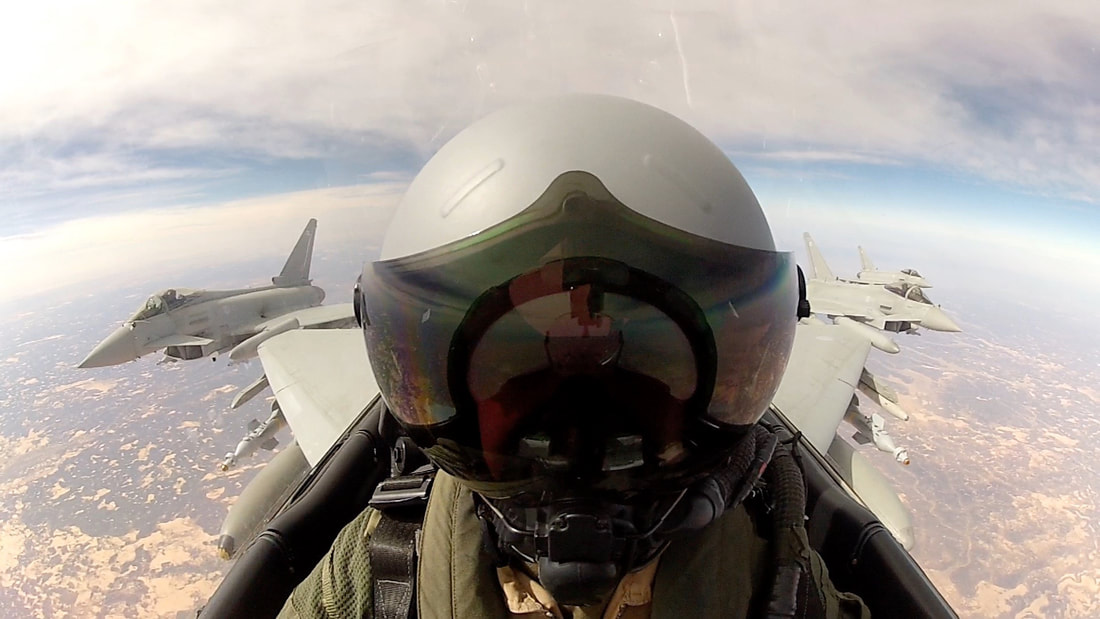







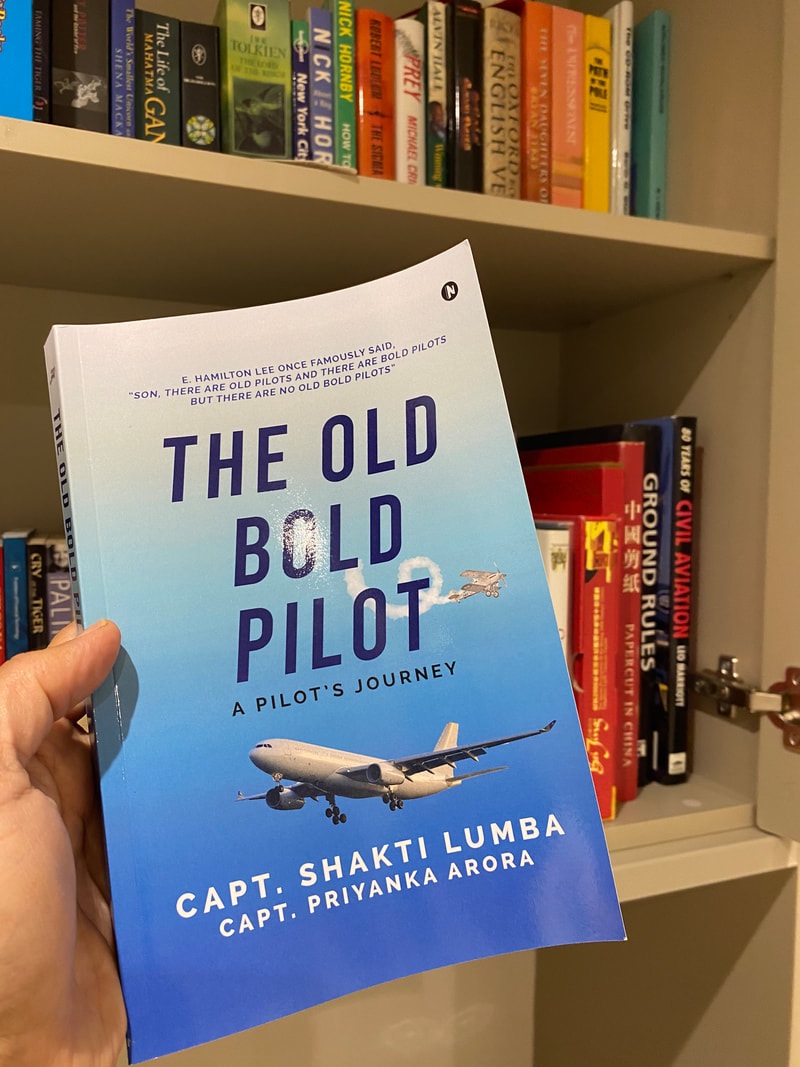
























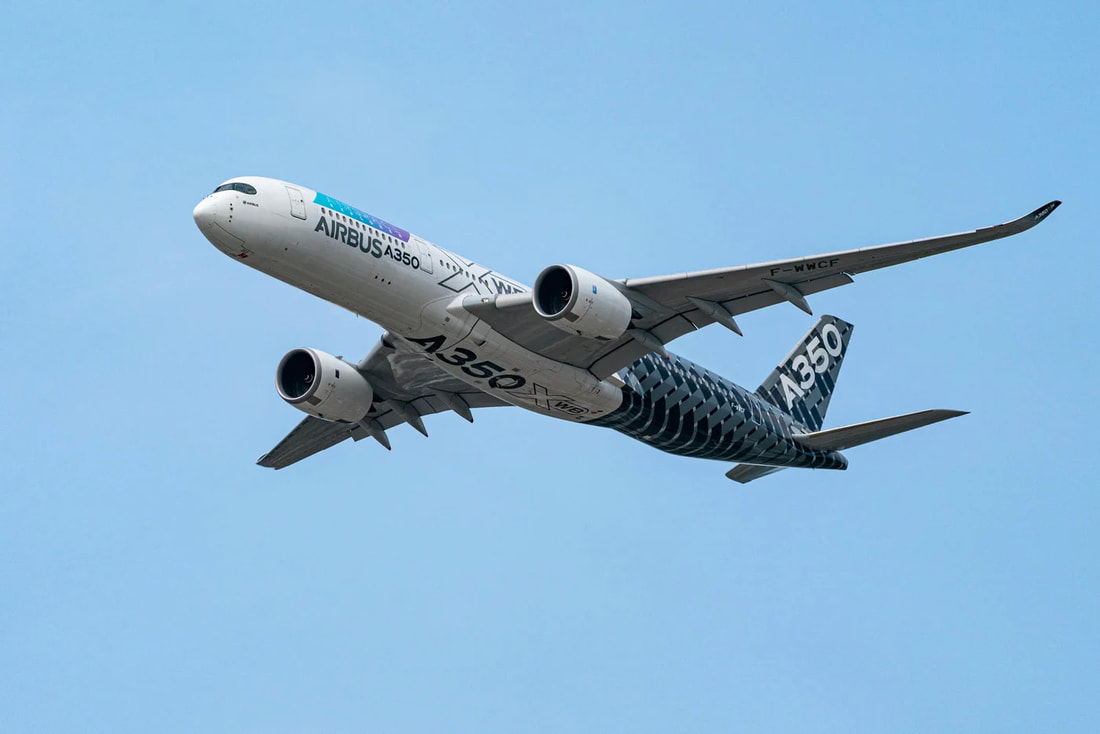









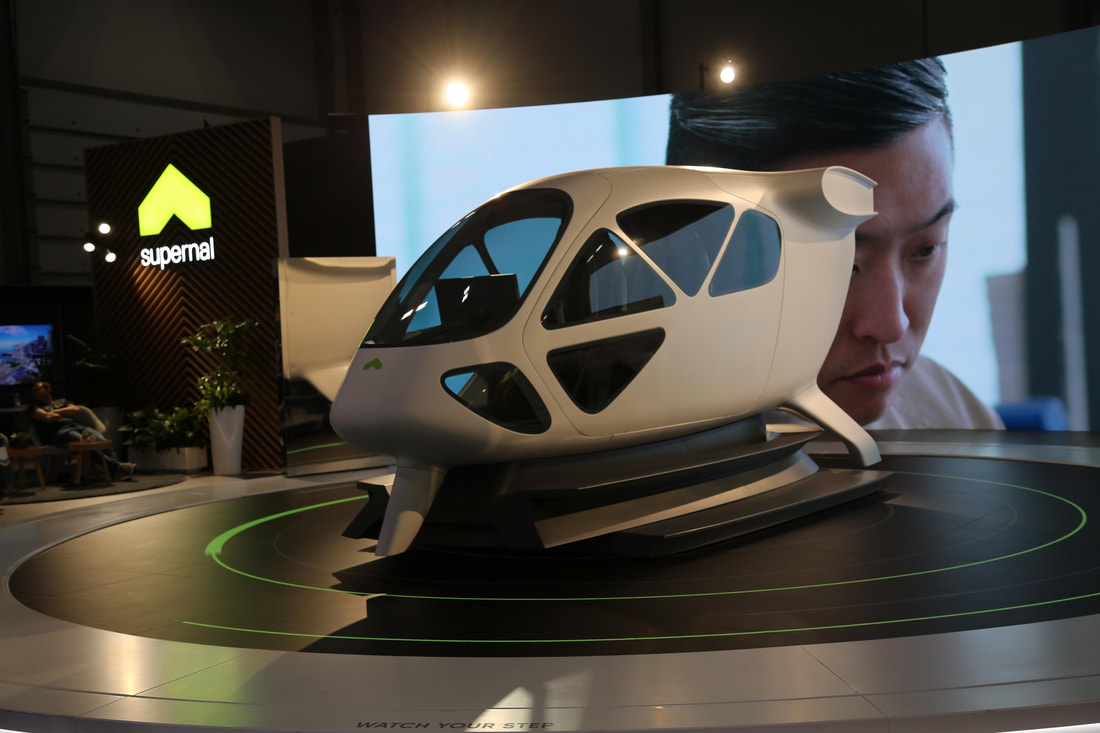

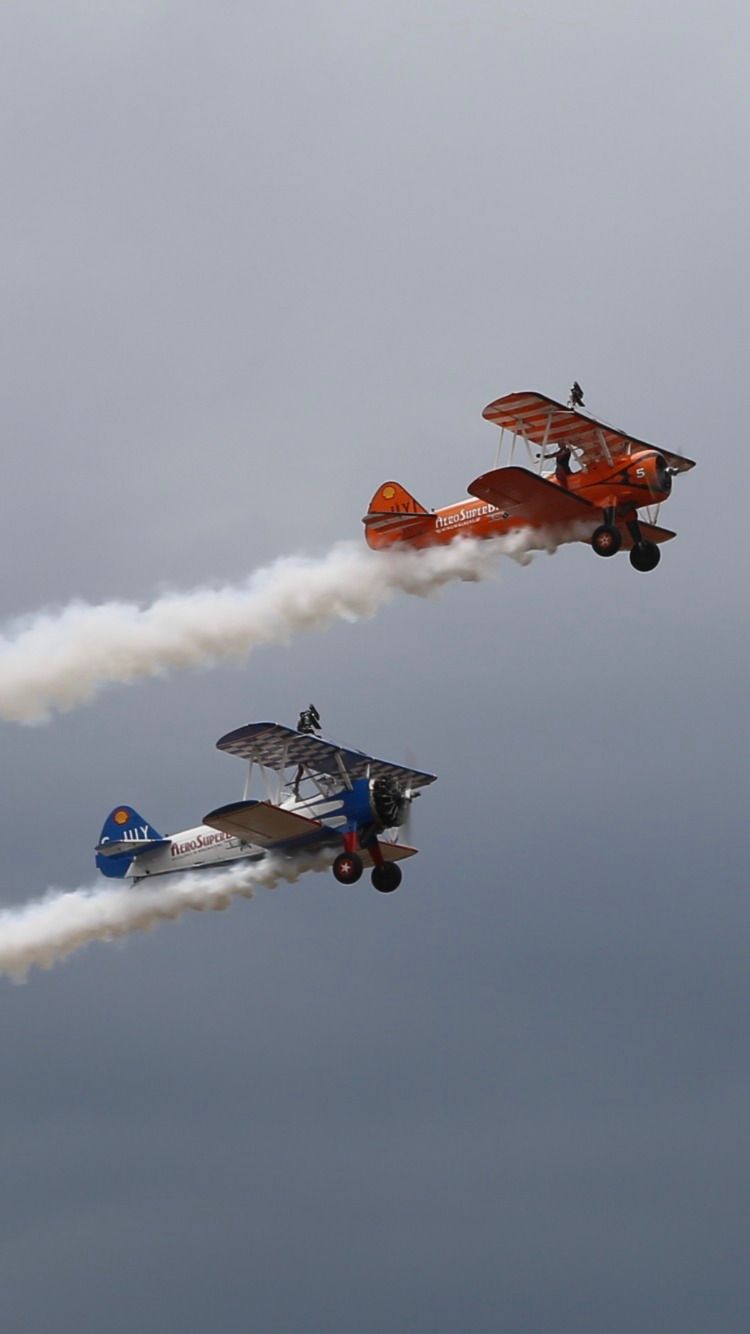






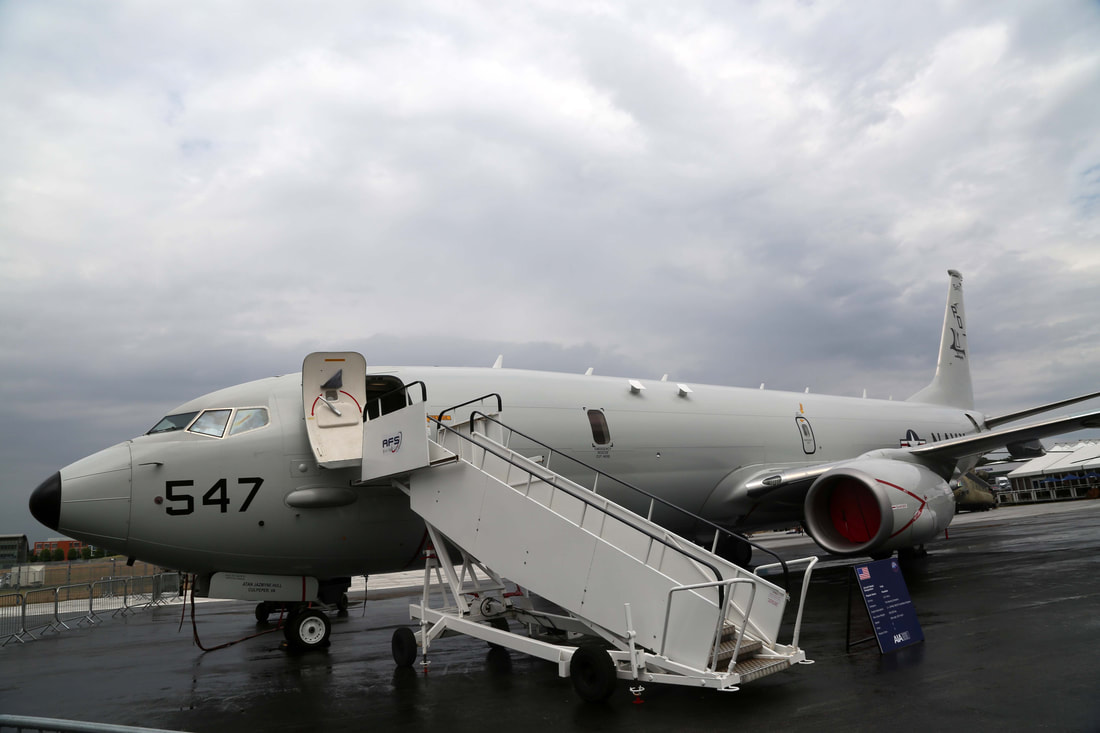


 RSS Feed
RSS Feed


